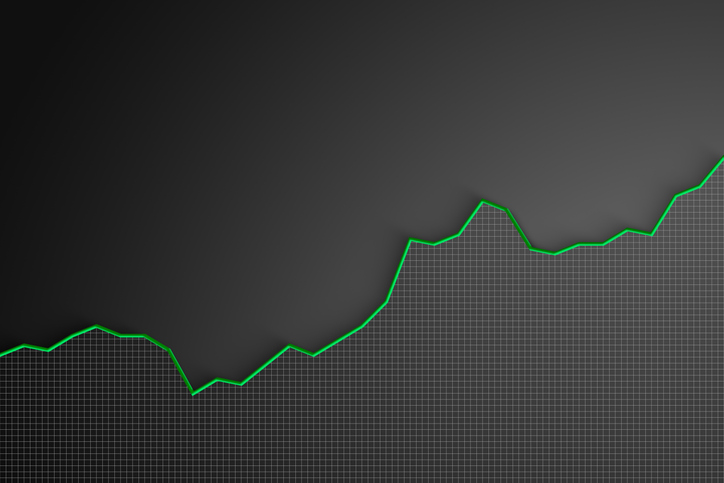The Best Energy ETFs to Buy
Energy ETFs can help investors earn income, hedge against inflation or speculate on commodity prices. Here are five we like.


More than a century after American magnate John D. Rockefeller built a petroleum empire through Standard Oil, the company's legacy still looms large in today's market. At its peak, Standard Oil controlled roughly 91% of U.S. oil production.
Some of the biggest players in the energy sector today – including Exxon Mobil (XOM), Chevron (CVX), BP (BP) and Marathon Petroleum (MPC) – can trace their corporate roots directly back to the 34 operating companies born from Standard Oil's historic breakup.
Today, there's no reason for prospective energy investors to go piecemeal trying to put Standard Oil back together. There are many good reasons to skip the stock picking altogether and opt for an energy ETF instead.
Why buy energy ETFs?
Energy ETFs are often viewed through a one-dimensional lens – primarily as a way to speculate on commodity prices. That makes sense at first glance, given the basic mechanics of how an integrated oil and gas company earns revenue.
These firms extract crude oil or natural gas, process and refine it, and then sell it in various forms. When energy prices rise, it means better margins on those products, stronger earnings and ultimately, higher stock prices. That dynamic is what draws traders and short-term investors looking to ride a price rally.
But that's just one of many ways energy ETFs can fit into your portfolio. Another key use case is inflation hedging. During the high-inflation, rising-rate environment of 2022 – when most funds struggled – energy ETFs stood out as one of the few that posted gains.
That's because inflation tends to lift the input costs across the economy, including oil and gas. Energy producers who sell those inputs can benefit from higher prices and pricing power, making them a rare winner when everything else is getting squeezed.
Finally, many of the largest energy companies have gotten incredibly lean and efficient in recent years. They've paid down debt, boosted margins and focused on capital discipline. That's led to record levels of free cash flow – essentially the money left over after paying for operations and maintenance.
With all that excess cash, they've ramped up shareholder returns through stock buybacks and, more notably, dividends. Energy giants routinely offer dividend yields that far surpass the broader market, making energy ETFs an appealing option for income-focused investors.
How we chose the best energy ETFs to buy
To narrow the field, we focused only on broad energy sector ETFs – funds that provide diversified exposure across the entire oil and gas value chain.
The energy industry is typically divided into three core segments: upstream (exploration and production), midstream (transportation and storage, including pipelines), and downstream (refining and distribution of end products like gasoline).
While there are plenty of niche ETFs targeting just one part of this chain – such as master limited partnerships (MLPs) or the companies drilling for oil and gas – we excluded those in favor of funds with broad coverage across two or more segments.
We also excluded leveraged and inverse energy ETFs, which are generally geared toward short-term trading, not long-term investing. These products reset daily, and compounding effects over time can result in returns that deviate significantly from the underlying benchmark.
Additionally, we left out commodity ETFs that trade oil, natural gas or refined fuel futures contracts. These tend to carry complex tax treatment – often issuing Schedule K-1 forms at tax time – and come with higher expense ratios and elevated volatility.
Lastly, while clean energy is undoubtedly a vital part of the global energy transition, it occupies a niche of its own. So don't expect to see any solar, wind or nuclear-focused ETFs on the list.
This roundup is specifically geared toward conventional energy ETFs that provide diversified access to the oil and gas industry in all its stages.
From there, we applied our usual three-part ETF selection framework:
Fees: Investors should avoid paying more than 50 basis points (0.5%) annually for a sector ETF in 2025, especially when many solid options charge well under that threshold.
Liquidity: A good ETF should be easy to trade, with a tight 30-day median bid-ask spread that minimizes hidden transaction costs.
Reputability: We prioritized ETFs from established issuers with strong track records and sufficient assets under management (AUM) to reduce the risk of fund closure due to lack of investor interest.
With that in mind, here are five of the best energy ETFs to buy.

The Energy Select Sector SPDR Fund
- Assets under management: $32.8 billion
- Expense ratio: 0.08%, or $8 annually for every $10,000 invested
- 30-day median bid-ask spread: 0.01%
- Dividend yield: 3.2%
The Energy Select Sector SPDR Fund (XLE) draws from a narrow subset of 23 energy stocks contained in the S&P 500, so it's made up almost entirely of large-cap companies that meet the index's earnings quality screen.
Because it's market cap-weighted, the larger a company is, the more it dominates the fund – Exxon Mobil and Chevron alone account for nearly 40% of the portfolio.
Still, this ETF remains a favorite thanks to its rock-bottom fees, deep liquidity and an available options chain for more advanced strategies.
Learn more about XLE at the State Street Global Advisors provider site.

Vanguard Energy ETF
- Assets under management: $7.8 billion
- Expense ratio: 0.09%
- 30-day median bid-ask spread: 0.04%
- Dividend yield: 3.1%
The Vanguard Energy ETF (VDE) is a more diversified alternative to XLE, with 112 holdings drawn from the broader MSCI US Investable Market Energy 25/50 Index.
That means it includes mid- and small-cap names in addition to the usual large-cap stocks. The fund is still market cap-weighted though, so Exxon Mobil and Chevron dominate, but to a lesser degree than in XLE.
VDE's options chain isn't as robust as XLE's, with fewer available strike prices, expiry dates and contract open interest. This makes the fund better suited as a buy-and-hold position for long-term investors.

iShares Global Energy ETF
- Assets under management: $1.8 billion
- Expense ratio: 0.41%
- 30-day median bid-ask spread: 0.05%
- Dividend yield: 4.3%
The energy sector doesn't end with the Exxon Mobil and Chevron duo. Global giants such as Shell (SHEL) and BP in the U.K., TotalEnergies (TTE) in France, and Canadian Natural Resources (CNQ) and Enbridge (ENB) in Canada are all major players.
U.S.-only ETFs such as XLE and VDE miss these names entirely, making the iShares Global Energy ETF (IXC) a strong alternative for those seeking international exposure.
The fund tracks 52 companies in the S&P Global 1200 Energy 4.5/22.5/45 Capped Index, offering market cap-weighted exposure to global energy leaders.
Though it's about four times as expensive as its U.S.-focused peers, IXC is still liquid and delivers a higher yield – making it a worthy trade-off for access to international holdings.

Fidelity MSCI Energy Index ETF
- Assets under management: $1.5 billion
- Expense ratio: 0.084%
- 30-day median bid-ask spread: 0.04%
- Dividend yield: 2.9%
There's more than one way to structure an energy index, and the Fidelity MSCI Energy Index ETF (FENY) – VDE's closest competitor – tracks the MSCI USA IMI Energy Index.
It currently holds just over 100 energy stocks in a market cap-weighted portfolio. As expected, Exxon Mobil and Chevron dominate the top spots.
While the benchmark differs from that of VDE or XLE, the overall exposure and historical performance are very similar. With nearly identical fees and trading liquidity, FENY also works well as a tax-loss harvesting partner for either.

Invesco S&P 500 Equal Weight Energy ETF
- Assets under management: $512.5 million
- Expense ratio: 0.40%
- 30-day median bid-ask spread: 0.06%
- Dividend yield: 2.3%
The Invesco S&P 500 Equal Weight Energy ETF (RSPG) is one of the best energy ETFs to buy if you want to stick with U.S.-listed companies but don't want a portfolio dominated by Exxon Mobil and Chevron.
It tracks the S&P 500 Equal Weight Energy Plus Index, which includes all 23 energy sector stocks in the S&P 500 and assigns each an equal weight regardless of market cap.
The higher expense ratio for RSPG may be a worthwhile trade-off for investors looking to sidestep concentration risk and gain more balanced exposure to the sector.
Learn more about RSPG at the Invesco provider site.
Related content
Get Kiplinger Today newsletter — free
Profit and prosper with the best of Kiplinger's advice on investing, taxes, retirement, personal finance and much more. Delivered daily. Enter your email in the box and click Sign Me Up.
Tony started investing during the 2017 marijuana stock bubble. After incurring some hilarious losses on various poor stock picks, he now adheres to Bogleheads-style passive investing strategies using index ETFs. Tony graduated in 2023 from Columbia University with a Master's degree in risk management. He holds the Certified ETF Advisor (CETF®) designation from The ETF Institute. Tony's work has also appeared in U.S. News & World Report, USA Today, ETF Central, The Motley Fool, TheStreet, and Benzinga. He is the founder of ETF Portfolio Blueprint.
-
 Verizon’s Free iPhone Deal: What to Know Before You Switch or Upgrade
Verizon’s Free iPhone Deal: What to Know Before You Switch or UpgradeVerizon is offering a free smartphone — including the latest iPhones — with any myPlan, plus a three-year price lock. But is it really the best deal for you?
By Choncé Maddox
-
 Married? Five Ways to Ensure Your Estate Plans Work in Tandem
Married? Five Ways to Ensure Your Estate Plans Work in TandemGetting on the same page now means fewer potential problems when it counts.
By Kiplinger Advisor Collective
-
 Before You Invest Like a Politician, Consider This Dilemma
Before You Invest Like a Politician, Consider This DilemmaAs apps that track congressional stock trading become more popular, investors need to take into consideration some caveats.
By Ryan K. Snover, Investment Adviser Representative
-
 How to Put Together Your Personal Net Worth Statement
How to Put Together Your Personal Net Worth StatementNow that tax season is over for most of us, it's the perfect time to organize your assets and liabilities to assess your financial wellness.
By Denise McClain, JD, CPA
-
 Stock Market Today: Trump Retreats, Markets Rejoice
Stock Market Today: Trump Retreats, Markets RejoiceStocks rally, yields soften, the dollar rises, and even beaten-down names enjoy the wages of potential trade peace.
By David Dittman
-
 Tesla Stock Pops as Elon Musk Promises DOGE Draw Back
Tesla Stock Pops as Elon Musk Promises DOGE Draw BackTesla reported a sharp drop in first-quarter earnings and sales, as the EV maker suffered a backlash to its CEO's political ambitions.
By Karee Venema
-
 Bouncing Back: New Tunes for Millennials Trying to Make It
Bouncing Back: New Tunes for Millennials Trying to Make ItAdele's mournful melodies kick off this generation's financial playlist, but with the right plan, Millennials can finish strong.
By Alvina Lo
-
 Early-Stage Startup Deals: How Do Convertible Notes Work?
Early-Stage Startup Deals: How Do Convertible Notes Work?Some angel investors support early startups by providing a loan in exchange for a convertible note, which includes annual interest and a maturity date.
By Murat Abdrakhmanov
-
 Stock Market Today: Stocks Soar on China Trade Talk Hopes
Stock Market Today: Stocks Soar on China Trade Talk HopesTreasury Secretary Bessent said current U.S.-China trade relations are unsustainable and signaled hopes for negotiations.
By Karee Venema
-
 How Can Investors Profit From AI's Energy Use?
How Can Investors Profit From AI's Energy Use?Global energy demand is expected to grow by leaps and bounds over the next several years as AI usage accelerates. Here's how to get a piece of the pie.
By Jacob Schroeder
